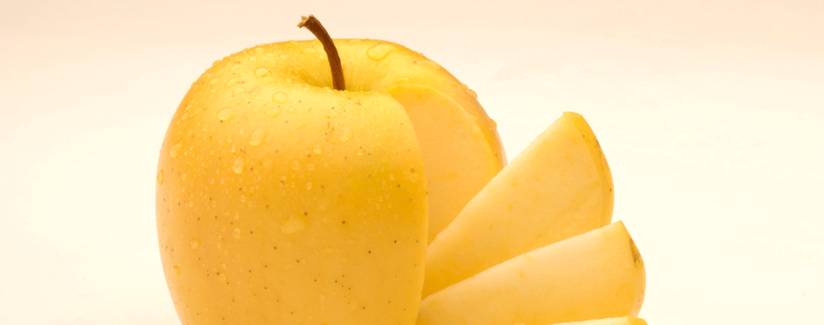
How Did Science Create An Apple That Does Not Brown?
10/12/2017
A new type of apple is available to shoppers this fall, giving consumers a chance to experience genetic engineering first hand.
Arctic Apple is a trade name for a type of fruit that does not turn brown when exposed to air. Shoppers can buy packages of sliced Arctic Golden apples. The developer, Okanagan of British Columbia, Canada, released the apple in 2016 to a few stores in the Midwest. It will now be available at 400 stores throughout the Midwest and Southern California.
The fruit is interesting because it was created through genetic engineering. We got in touch with Dr. Sally Mackenzie at the Center for Plant Innovation at the University of Nebraska and Dr. Patrick Byrne, professor of plant breeding and genetics at Colorado State University, to peel back the layers and find out what’s underneath this apple.
How Does It Work?
“Arctic Apples are the first genetically engineered food in the US to use gene silencing via RNA interference to reduce production of a naturally occurring protein,” Dr. Byrne said. “In the case of Arctic Apples, the protein whose production is reduced is polyphenol oxidase (PPO), an enzyme responsible for oxidizing phenolic compounds and causing a browning reaction in apples after slicing or bruising.”
Dr. Mackenzie explained that scientists used a technology known as RNA interference to turn off a specific gene. “The gene that is being silenced in the apple is a polyphenol oxidase, an enzyme that participates in the oxidation process that causes browning and off flavor,” she said.
This infographic shows why fruit turns brown when exposed to oxygen. To “turn off” the enzyme, scientists developed a gene construction that the cell recognizes so that the targeted gene is affected.
“What is important to understand is that we are introducing segments of the plant’s own gene to trigger this targeting. Therefore, we are not introducing foreign DNA, but the plant’s own DNA to cause the change,” she said.
This process is “cisgenic” gene editing and is not the same as “transgenic” technology which introduces DNA from a different organism. That process has been used in GMO plants which farmers have grown for many years.
“This differs from genetically engineered herbicide-tolerant or insect-resistant corn, soybeans, and canola, in which a protein-encoding gene from another organism was introduced into plant cells and the novel protein is produced in the plant,” Dr. Byrne said.
Is It Safe?
Dr. Mackenzie emphasized that there are no health concerns with any GMO foods.
“In fact, transgenic technologies on the market have a perfect record for food safety, without a single documented incident of health concern as a consequence of GM technologies. The Arctic Apple presents no health concerns to date that could be reasoned from its design,” she said.
The FDA approved both the Golden Delicious and Granny Smith varieties of Arctic Apples. Foods derived from genetically engineered plants must meet the same legal and safety standards as foods derived from traditional plant breeding methods.
“The U.S. Food and Drug Administration evaluated extensive information provided by the crop’s developer, Okanagan Specialty Fruits. It found that differences in compositional analysis between Arctic and conventional apples ‘were small and would not adversely affect the nutritional quality of the apples or raise any safety concerns’,” Dr. Byrne said.
When novel proteins are introduced in foods, there is concern about the potential for allergic reaction, he said. “In this case, the main effect is suppression of a native gene, rather than introduction of a new gene for the non-browning effect. The only new protein expressed is a small amount of the enzyme made by the selectable marker gene, which has previously been found by FDA to pose no food safety concerns,” he said.
What’s Next?
Expect to see more cisgenic foods in the future.
“This product has shown that it is technically feasible to engineer a plant to suppress production of a protein, even for a multi-gene family of proteins like PPO,” Dr. Byrne said.
Dr. Mackenzie predicts a wide range of new products will make use of the technology.
“We will see more varied types of crop improvements and novel traits, since regulations of cisgenic traits are less onerous and so it will be more feasible to introduce improvements to more varied crops and with much more attention to consumer desire rather than profitability,” she said.
The Best Food Facts team got to sample Arctic Apples and you can see what we thought.
As Arctic Apples make their debut in the marketplace, they introduce cisgenic gene editing that uses the plant’s own DNA to express a specific trait. The non-browning apples could be the first of many foods that use this technique.
Originally published Jan. 31, 2017.



























